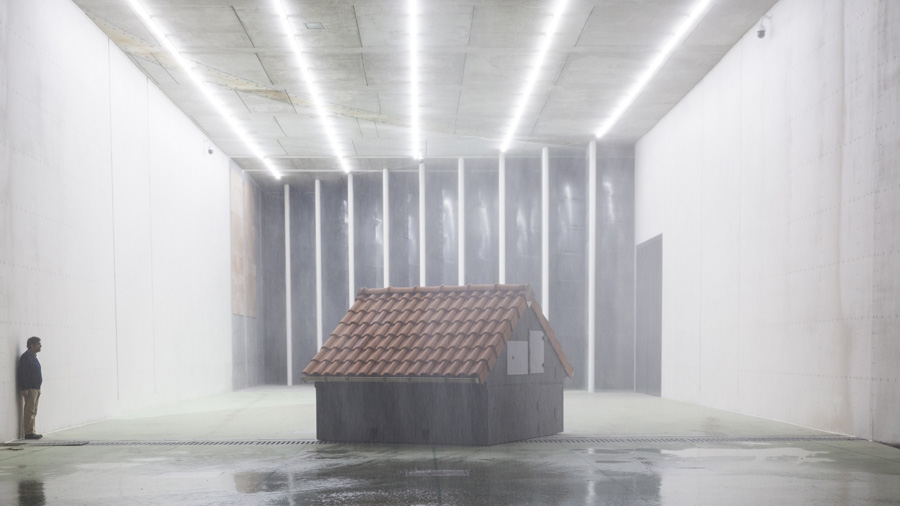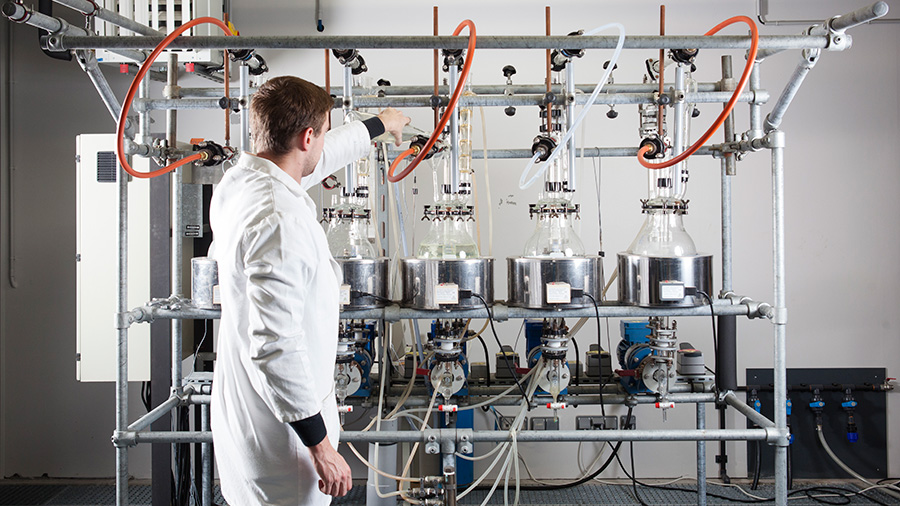The CSTB Nantes site is home to France’s main laboratories in wind and water engineering for the building industry. It possesses major facilities such as the Jules Verne climatic wind tunnel that can reproduce all types of climates, and Aquasim, specializing in sustainable management of water in buildings. Nearly 100 specialists in climatology, aerodynamics and the water cycle work in Nantes, supporting French and global professionals in the industries of construction, transportation, industrial equipment and energy production.
Activities
At CSTB Nantes, the key areas of expertise center on the effects of wind and climate on structures to determine the sizing of buildings and civil engineering works, and improving comfort in outdoor spaces. Another specialist area is the characterization of ventilation and combustion heating systems in buildings.
The experts based in Nantes also work with professionals for the sustainable management of water in buildings. They help improve water sanitary quality and the sustainability of water systems in buildings and the surrounding plot of land. All types of water are studied, from drinking to waste water, rain water, greywater, domestic hot water and more specific types such as swimming pool and thermal spa water.
The teams in Nantes also possess expertise in the field of lighting, like their colleagues in Grenoble.
CSTB Nantes supports stakeholders through collaborative research projects led by the CSTB Carnot Institute, expert missions and assessment services. The CSTB teams work with local authorities, industrialists, designers, builders and operators (buildings, vehicles, ships, trains, sanitation systems, wind farms, etc.).
Test facilities
Other specialized fields:
Partners
The CSTB launches and contributes to large-scale projects concerning the built environment and works of civil engineering, working with partners in the Pays de la Loire region, such as:
- the Institute for Research on Urban Sciences and Techniques (IRSTV), where the CSTB participates in the federated research projects “Urban microclimatology and energy modeling” and “Urban land”;
- LiRGeC, a scientific interest grouping (GIS) for research in civil engineering and construction which the CSTB co-founded with the French Institute of Science and Technology for Transport, Development and Networks (IFSTTAR) and the GeM (research in civil and mechanical engineering);
- the Novabuild cluster, a partner of the CSTB in the framework of the RNA National Support Network, where the CSTB holds the vice-presidency and chairs the scientific and technical council.
The CSTB has also contributed from the very beginning to the work of the regional platforms for innovation (PRI) and competitiveness clusters (EMC2, IRT Jules Verne, S2E2, ID4CAR, ATEE Ouest, Smart in Light, Atlansun, Primabor, West Atlantic Marine Energy Center, etc.).
In the water sector, Aquasim participates in the European Water Supply and Sanitation Technology Platform (WssTP) and national-level competitiveness clusters (Hydréos and Pôle de l'eau).
In France and abroad, the CSTB plays a strong role in major construction projects by providing its expertise in wind engineering to perfect the designs of bridges, high-rise buildings, stadiums, museums, train stations, shopping centers and other types of premises open to the public. See a selection of images.


